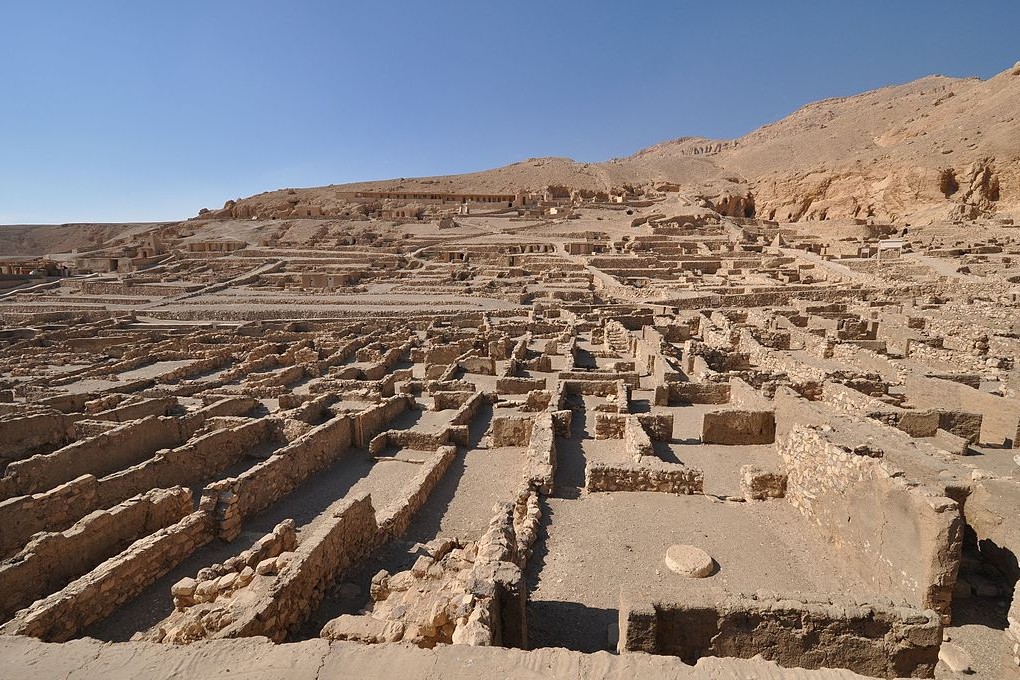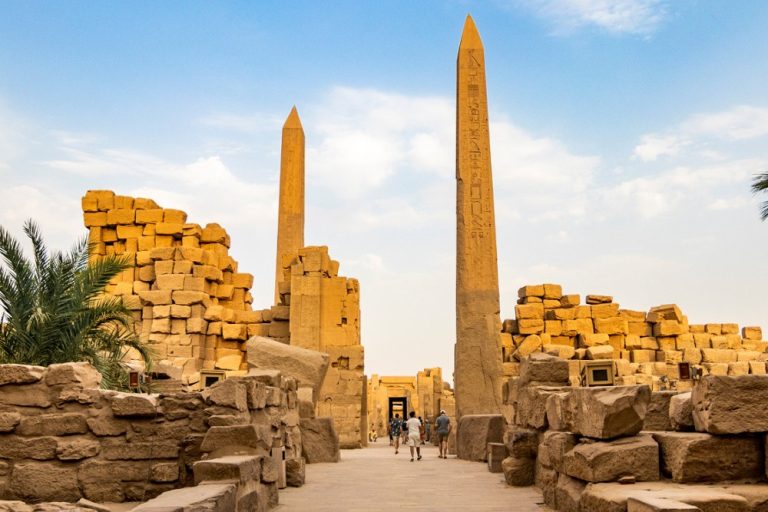Ancient Egyptian Houses
pharaonic homes
Imagine going back 3,000 years and walking through a small Egyptian village. Instead of big pyramids or golden tombs, you would see rows of mudbrick houses. These simple homes are practical and full of life. Children play on rooftops, women bake bread in clay ovens, and families gather in shady courtyards to share meals and prayers. While these houses are not as strong as temples and tombs, they show the real story of Ancient Egypt: how ordinary people lived, worked, and worshipped along the Nile. For today’s traveler, exploring these homes gives a unique chance to connect with the everyday side of a civilization often remembered only for its grand monuments.

What Ancient Egyptian Houses Were Made Of
The Nile River was essential for life and shaped the homes of ancient Egyptians. Its fertile mud provided the key ingredient for sun-dried bricks, which were used to build nearly every Egyptian home. Workers mixed mud with straw, pressed it into wooden molds, and left it to dry in the sun. These bricks were cheap, plentiful, and surprisingly strong in Egypt’s dry climate.
Wood was hard to find, so it was rarely used for walls. Instead, builders used palm trunks or acacia beams for ceilings and doorways. They made mats and coverings from reeds and papyrus, while clay plaster gave walls a smooth finish. Stone was saved for temples, tombs, and palaces—buildings meant to last forever. In contrast, houses were temporary, rebuilt or repaired after floods or erosion.
This is why so few houses remain today. What we know comes from archaeological sites like Deir el-Medina, where tomb builders lived near Luxor, and Amarna, the short-term capital of Akhenaten. These sites are valuable for visitors, as they show the layout of real homes and provide a glimpse into daily life.
Luxor Tours & Activities
Looking to save some costs on your travel? Why not join a shared group tour to explore Luxor, Egypt? Here are some activities you might be interested in:
How Ancient Egyptian Homes Were Structured
Egyptian houses were smartly designed for the desert climate, even though they used simple materials. Flat roofs served as outdoor living rooms where families could sleep on hot summer nights. Small, high windows helped with airflow while keeping out dust and heat. Courtyards acted as kitchens, workshops, and meeting areas. Elevated thresholds stopped sand from blowing inside.
The layout of the houses varied based on the family’s wealth. A poor family might live in a one-room hut, while a wealthy family could have a villa with many rooms, gardens, and even private chapels. Regardless of their social class, the house designs focused on practicality and cultural values: protection from the weather, space for family activities, and areas for worship.
Rich vs. Poor: The Social Divide in Housing
The difference between rich and poor homes in Egypt was very clear and showed the strict social classes.
Poor families usually lived in:
– One-room mudbrick huts with reed mats for sleeping
– Clay ovens or open hearths for cooking
– Rooftops to sleep on to avoid the heat
Wealthy families, on the other hand, lived in:
– Multi-room villas with reception halls, bedrooms, and storerooms
– Painted walls with geometric patterns or scenes of everyday life
– Wooden furniture like carved beds, stools, and chests
– Private gardens with trees, pools, and shrines
– Granaries for storing surplus grain and chapels for family worship
For visitors to Amarna, the remains of rich villas show columned halls, decorative plaster, and signs of gardens. These features remind us that wealthy Egyptians lived comfortably. In contrast, the small homes at Deir el-Medina show how artisans lived humbly but with dignity, close to the tombs they built.

Daily Life Inside Ancient Egyptian Houses
When you enter an Egyptian home, you see a mix of practical and spiritual life.
Cooking played a key role. Women baked bread in clay ovens, made beer, and prepared stews in courtyards to keep smoke outside.
Furniture was simple but useful. They had stools, low tables, woven mats, and wooden beds with string supports. Wealthier homes included painted chests and carved chairs.
Household shrines honored gods and ancestors. Even small homes had places for offerings, showing how religion influenced everyday life.
Family roles were clear. Women managed the home, while men worked in fields, workshops, or construction. Children often helped with chores or learned trades from their parents.
For modern visitors, museums display items like grinding stones, loom weights, and clay jars that bring these daily scenes to life. The Luxor Museum and the Egyptian Museum in Cairo showcase artifacts that were once used in these homes.

Ingenious Adaptations to the Desert Climate
Egyptians were skilled at adapting to their climate. Their homes show a strong understanding of desert living:
Thick mudbrick walls kept the inside cool during the day and warm at night. Flat roofs offered breezy sleeping areas in the summer. Reed coverings blocked dust and flies from doors and windows. Courtyards created shaded spaces for cooking and socializing.
These features were not just practical; they also shaped cultural habits. Rooftop sleeping, courtyard cooking, and shaded gardens became key parts of Egyptian home life. Many of these traditions still exist in rural Egyptian villages today.

Where Travelers Can See Ancient Houses
Mudbrick houses in Egypt don’t last long, so few are still standing today. However, some sites provide a clear picture of daily life in ancient Egypt:
1. Deir el-Medina (Luxor): This is the best-preserved village for workers in Egypt. The narrow streets and compact houses show how artisans lived while building royal tombs. Visitors can walk through the foundations and imagine the daily life of this close-knit community.
2. Amarna (Tell el-Amarna): This was Akhenaten’s capital, and it has both luxurious villas and simple homes. The difference between the grand halls and basic huts highlights the social divide in Egypt.
3. Kahun (El-Lahun): This Middle Kingdom town was built for pyramid workers and shows evidence of planned streets and similar houses. It is less visited but provides important information about urban planning.
4. Tomb paintings and models: Tombs often show scenes of houses, courtyards, and gardens. Wooden models of houses, like those from Al-Bersha, can be seen in museums.
These sites are more than just ruins; they help travelers understand the everyday lives of ancient Egyptians.
Symbolism and Cultural Significance
Houses were more than just places to live. They held important meanings and cultural significance:
– Social identity: The size and decoration of a house showed a family’s status in society.
– Religious practice: Household shrines connected families to their gods and ancestors, blending home life with spiritual life.
– Cultural continuity: Even with leadership changes, the basic design of Egyptian houses stayed the same for centuries, helping to maintain a sense of stability.
In many ways, the Egyptian house reflected the whole civilization: practical, strong, and closely linked to both the environment and beliefs.
Got a Question?
F.A.Qs
Mostly sun-dried mudbrick, reinforced with straw and supported by wooden beams.
Yes—flat roofs were used for sleeping, eating, and socializing, especially in hot weather.
Poor homes were usually one-room huts, while wealthy families lived in multi-room villas with gardens, painted walls, and private chapels.
Few survive intact, but sites like Deir el-Medina and Amarna preserve foundations and layouts that reveal much about domestic life.
Did you know that
By purchasing through our links, you support us at no additional cost.
Thank you for your support. ♥️






